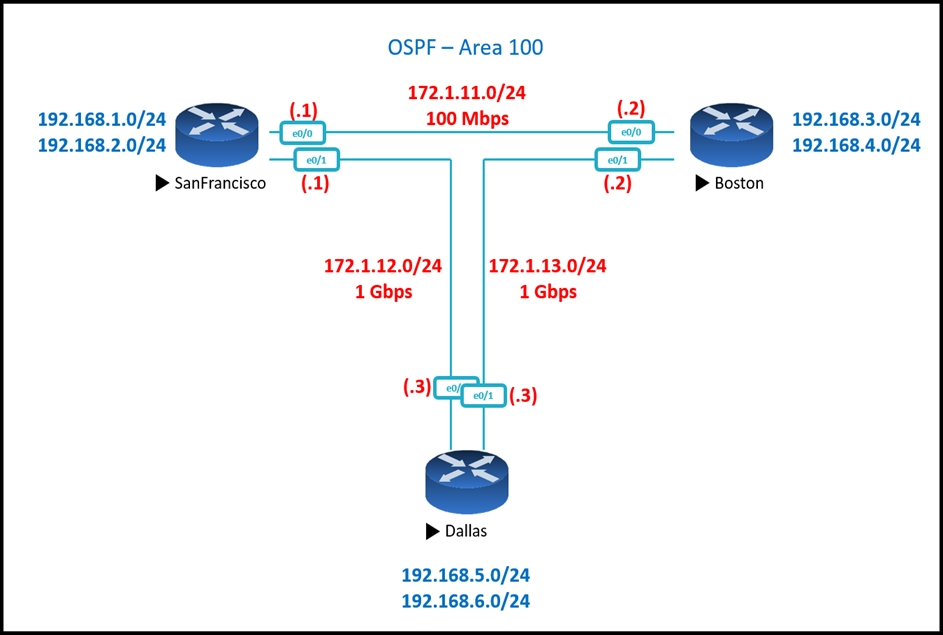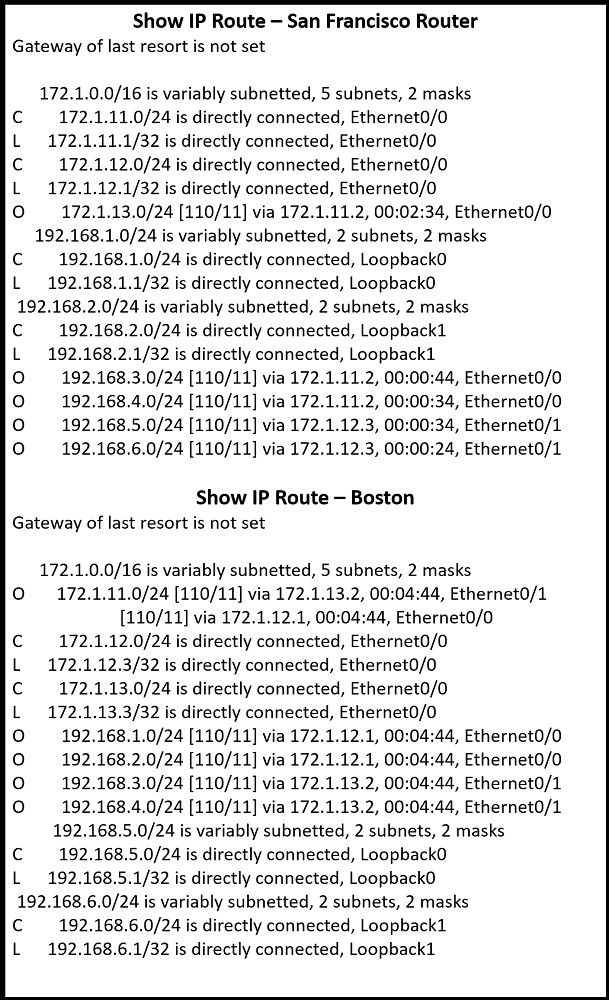

Refer to the exhibits. SanFrancisco and Boston routers are choosing slower links to reach each other despite the direct links being up.
Which configuration fixes the issue?


Refer to the exhibits. SanFrancisco and Boston routers are choosing slower links to reach each other despite the direct links being up.
Which configuration fixes the issue?
The problem arises because OSPF uses a default reference bandwidth of 100 Mbps to calculate the cost for all routes. This causes any link with a bandwidth of 100 Mbps or more to have the same cost, which is why the routers are not favoring the faster 1 Gbps links over the 100 Mbps links. To fix this, the reference bandwidth should be updated to 1000 Mbps on all routers so that OSPF can accurately distinguish between the different link speeds. Adjusting the reference bandwidth to 1000 Mbps allows OSPF to assign a lower cost to the 1 Gbps links, thus ensuring they are preferred over the slower 100 Mbps links.
D is ok : Under the OSPF process, the command auto-cost reference-bandwidth bandwidth-in- mbps changes the reference bandwidth for all OSPF interfaces associated with that process. If the reference bandwidth is changed on one router, then the reference bandwidth should be changed on all OSPF routers to ensure that SPF uses the same logic to prevent routing loops. It is a best practice to set the same reference bandwidth for all OSPF routers.
Poorly worded. They mean even though the faster links are up, not "direct" links. The direct links are the slower links. Anyway, D is right, because on many Cisco router platforms, the reference bandwidth default is less than 1000, which makes it inaccurate for 1Gb links or higher.
I'think the lower route table is not Boston's. It's Dallas's.
They have made a mistake, the output of the lower router is Dallas. D is correct
By default, OSPF assigns a cost based on a reference bandwidth of 100 Mbps so, any link at 100 Mbps or more gets a cost of 1. To fix this issue, the auto-cost reference-bandwidth command needs to be used to recalibrate the OSPF cost calculation so that it can differentiate between the 100 Mbps and 1 Gbps links.
R1(config-router)#auto-cost reference-bandwidth ? <1-4294967> The reference bandwidth in terms of Mbits per second R1(config-router)#auto-cost reference-bandwidth it's being defined as mbps, so it's D
The Bottom image is Dallas not Boston. Thios image shows the same cost to reach Boston and Sanfranciso (11) as it does for San-Franciso to reach Boston (11) over the 100MBs interface. OSPF cost = reference badwidth/interface bandwidth. The costs Will be rounded up to nearest integer. So assuming we caave a reference bandwidth of 100MBS: 100/100 = 1. 100/1000 = .1 which equals 1, as Cisco routers only calculate integers. If we make reference bandwidth 1000 --> 1000/100 = cost of 10 (+ any cost through the domain) and 1000/1000 = 1
D is correct